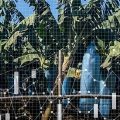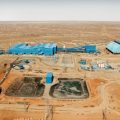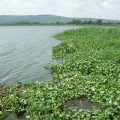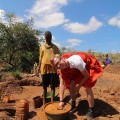SPECIAL REPORTS AND PROJECTS
Ugandan communities battle to benefit from mining on their land
Published
3 years agoon
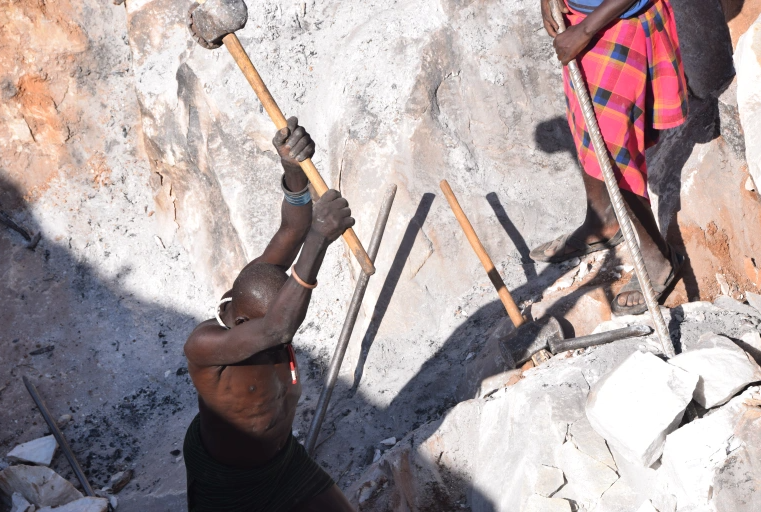
Communities in Karamoja face an uphill task organising to beat international capital and authoritarian politics.
Rupa, Uganda – A handful of artisanal miners stand shirtless in an open pit, breaking boulders that glint white in the sun. Nearby, soldiers stand sullenly at the gate of the Sunbelt Marble Mine and Factory, owned by Chinese businessmen who have sunk $13m into the project.
These are the two faces of the mining rush in the Karamoja region of northeast Uganda: small-scale freelance miners, toiling with basic equipment for scant reward, and a mix of wealthy foreign and local investors protected by the state.
Here in Rupa, a sub-county of Moroto district, the locals have seen companies come and go, buying up land and dividing communities. So in 2017, when they got wind that a Chinese company was coming, they were determined to do things differently: this time, they were going to organise.
It was a pioneering attempt to ensure that local people benefitted from mining, building on customary ownership and exploiting little-used provisions of Ugandan land law.
But the story of how it worked – and how it did not – shows just how hard it is for communities to organise in the face of international capital and authoritarian politics.
Mining rush
Many of the 1.2 million people in Karamoja are cattle-keepers, driving their herds across grasslands managed by clan and custom. The rains are fickle, so negotiating access to pasture involves an element of give-and-take.
But the mining companies that are exploring the region want something solid and immovable: the minerals that lie beneath the soil, including marble, limestone, copper and gold.
In the early 2000s, the army forcefully disarmed the gun-wielding cattle-raiders who once roamed the plains, and speculators rushed in during the ensuing peace.
“The first businesspeople who came were taking over the land,” says Simon Nangiro, chairman of the Karamoja Miners Association, which represents small-scale miners in the region. “Companies come with military accompaniments … [They’re] negotiating behind the scenes with people who are vulnerable.”
According to the mining cadastre, the government has granted full mining leases in Karamoja to four companies – Sunbelt, Tororo Cement, DAO Marble and Mechanized Agro – across 79 square km (31 square miles) of land.
It has also issued licences for exploration to dozens of other local and foreign companies on roughly 4,000 square km (1,544 square miles) and is considering applications on nearly 5,000 square km (1,931 square miles) more.
Documents like leases, licences and land titles are how the modern state speaks – but it is a language foreign to Karamoja, where ownership is rarely written down and only a quarter of people can read.
“Here in Karamoja we have a customary land tenure system,” explains John Bosco Logwee, an elder in Rupa and one of the leaders of organising efforts there. “As a result, people [from outside] looked at the land and thought it does not belong to anybody.”
In Uganda as a whole, an estimated 80 percent of the land is held customarily although exact figures are hard to come by. The problem of proving who owns what worries everyone from activists, who warn of land grabs, to the World Bank, which wants to spur rural property markets.
Under the 1998 Land Act, communities can create “communal land associations” (CLAs) to defend their collective land rights. More than 600 have been incorporated nationwide, often with World Bank support.
Some of the first to be established were in Karamoja, where 52 were set up in 2012-2013 by a non-governmental organisation, the Uganda Land Alliance. According to Edmond Owor, its former executive director, the CLAs had some early successes in fending off fraudulent investors. But in 2016, the Alliance itself collapsed due to internal governance problems, leaving the fledgling CLAs on their own.
“The creation of a CLA is a very easy process, and that’s where the easy work ends,” says Simon Longoli, executive director of the Karamoja Development Forum (KDF), a civil society group based in Moroto. “We find it very difficult to trust a piece of paper to ensure the rights of the community over a piece of land.”
What people really needed, he thought, was organising and capacity building to assert the rights they had on paper. In short, they needed power.
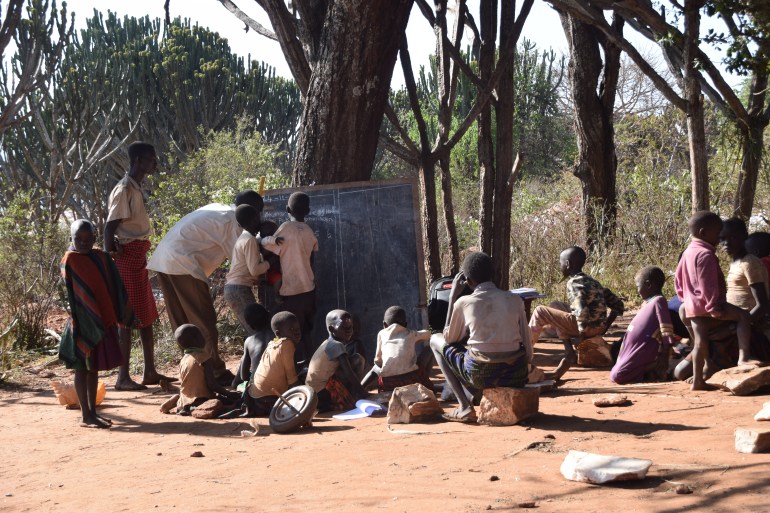
Community organising
Communities in Rupa had been at the forefront of Karamoja’s mining rush. A 2014 report by Human Rights Watch described how two foreign-owned companies had come to the area and started exploration without the consent of the locals.
“International capital has come into Karamoja, it has allied itself with powerful political and military elites at the centre, facilitated by influence peddlers,” says David Pulkol, a Rupa indigene who formerly served as a member of parliament, government minister and head of Uganda’s external intelligence agency. “Those three are in the same bed, dispossessing the ordinary people of their livelihoods.”
So in 2017, the three clans of Rupa sub-county joined their CLAs together to form the Rupa Community Development Trust (RUCODET), taking out the formal title to the land on behalf of 35,000 people.
Longoli and his KDF colleagues arranged training for the trust’s leaders in negotiation and other skills. No other community in Karamoja had organised on such a scale to take on mining companies.
The arrival of the Sunbelt mine would give RUCODET its first major test. Under Ugandan law, all minerals belong to the government. But landowners have “surface rights” to the land itself, which have often been trampled by mining companies.
Now, thanks to RUCODET, the Chinese investors would have to negotiate with the community. “It was tough,” says Logwee, the elder. “We had no experience before of that kind of thing.”
Sunbelt had strong backing from Operation Wealth Creation, a sprawling Ugandan military programme that started out giving seeds to farmers and was now helping build fruit factories, disburse credit and develop the minerals sector.
The programme is led by Salim Saleh, Ugandan President Yoweri Museveni’s ubiquitous brother, whom many consider the second-most powerful man in the country. He is a feared general with extensive business interests, who has been accused by UN experts of grabbing resources during the 1998-2003 Congo war – an allegation he has always denied.
As part of the negotiations, a team from RUCODET travelled 400km to Kapeeka, where a Chinese-owned industrial park has been constructed close to Saleh’s personal residence. Longoli of KDF says that some leaders in RUCODET and in local government were taking calls from Saleh himself to get an agreement signed.
Major Kiconco Tabaro, a spokesman for Operation Wealth Creation, claims that it was not directly involved in the negotiations but has “a strategic working relationship with all ministries, departments and agencies of government” to “help bring about socioeconomic transformation”.
It was hard to say no to a man like Saleh, and the leaders of RUCODET did not. In 2018, they signed away surface rights to 3.3 square km of land to Sunbelt for 21 years, receiving compensation of 1.8 billion shillings ($500,000), they say.
By one yardstick, that was a lot of money. Small-scale miners in Rupa say they get just 100,000 shillings ($28) from traders for filling a 7-tonne truck with stone, a task which takes four people at least a week.
But Sunbelt expects gross revenues of $30m a year, according to the 2021 manifesto of the ruling National Resistance Movement – making the payout to RUCODET equivalent to one week’s turnover. A spokesman for Sunbelt declined an interview request for this story.
The leaders of RUCODET used 100 million shillings ($28,000) to set up 94 educational scholarships for schoolchildren and university students. Some of the rest was handed out as cash to community members.
But there was protest from those who felt left out and mutterings that money was misused or even stolen – allegations which Logwee dismisses as “speculation”. Three people familiar with the matter told Al Jazeera that the lawyer who advised RUCODET charged 400 million shillings ($110,000) for his services, which included the cost of surveying and titling the land.
Then tragedy struck. The leader of RUCODET was a man called Marjory Dan Apollo Loyomo, a brother of the former spy chief Pulkol. “He was very strong, he was very charismatic, he was very committed,” recalls Longoli. He was also the elected chairman of Rupa sub-county, which meant he had to represent his people in disputes.
In 2019, after a decade of peace, the armed cattle-raiders started to make a comeback. Loyomo had disagreed with aspects of the army’s handling of the issue.
On December 17 that year, according to the UN Human Rights office, the army called him to a military detach in Rupa. It had impounded cattle after a raid; local people were angry. Loyomo, as sub-county chairman, tried to deliberate with the officers. A soldier shot him dead.
The regional army commander was transferred soon afterwards. His successor, Brigadier General Joseph Balikudembe, says that he cannot comment on the incident due to ongoing proceedings against the soldiers involved.
Nobody that Al Jazeera spoke to wanted to speculate on the reasons for Loyomo’s killing, but everyone agreed that it was a devastating setback.
“The loss of a torchbearer, the founder chairman, has been a very big loss for RUCODET,” says Logwee, who has succeeded him to the role.
“He was fighting really for his people,” argues Joyce Nayor, an activist and Rupa resident who is critical of the trust’s current leadership. “Since he died, RUCODET has also died a natural death.”
Hardly any local people got jobs in the Sunbelt mine, Al Jazeera heard on two visits to the area with local activists. Some small-scale miners have been allowed to remain in a corner of the land that was allocated to the company, where they break boulders for sale.
They complain that Sunbelt tried to push them into an ever-smaller area and take away the traders who would buy their stone – and that RUCODET has done little to help.
“RUCODET is there in name only,” says Isaiah Aleu, a miner.

Choppy waters
Land trusts and CLAs are promising tools for communities to defend their rights, say land campaigners. But there is no consensus about how they should navigate turbulent political waters.
Pulkol is now helping build RUCODET’s capacity through the Africa Leadership Institute, a non-governmental organisation he leads. He thinks the best hope for Karamoja is to work with investors and government for shared benefits, rather than to block them altogether.
Longoli, the activist, is not so sure. Often when it comes to minerals, “the best deal is just no deal”, he says. “RUCODET, because of pressure from above or pressure from within the institution, was in a hurry to close deals.”
Yet he remains hopeful that organisations like RUCODET can be the basis for something better. “These are not perfect but they give a bridge somewhere,” he says.
The next test is coming soon.
In Loyoro sub-county of Kaabong district, 100km (62 miles) to the north, a new company called Moroto Ateker Cement is exploring for limestone. Pulkol, representing the local government of Moroto, sits on its board.
The state-owned Uganda Development Corporation has a 45 percent stake in the project. The seven clans of Loyoro have started the process of forming a trust, after the RUCODET model.
Meanwhile, in the bush, surrounded by soldiers and tsetse flies, exploratory drilling machines bore down into their land.
Source: Al Jazeera
Related posts:
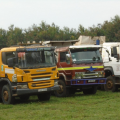
 Uganda: Moroto Residents Accuse President Museveni of Grabbing Their Land
Uganda: Moroto Residents Accuse President Museveni of Grabbing Their Land
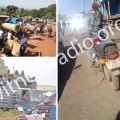 State Power: Army Used Expired Mining license to Forcefully Evict 120,000 Families Off Gold-Rich Land
State Power: Army Used Expired Mining license to Forcefully Evict 120,000 Families Off Gold-Rich Land
 3 Mining Companies named to be evicting 120, 000 families off 12-Square miles in Mubende
3 Mining Companies named to be evicting 120, 000 families off 12-Square miles in Mubende
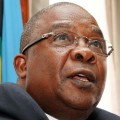 Minister to arrest land grabbers in Karamoja
Minister to arrest land grabbers in Karamoja
You may like
SPECIAL REPORTS AND PROJECTS
Activism on Trial: Despite the increasing repressive measures, Uganda’s EACOP protesters are achieving unexpected victories in the country’s justice systems.
Published
4 days agoon
July 8, 2025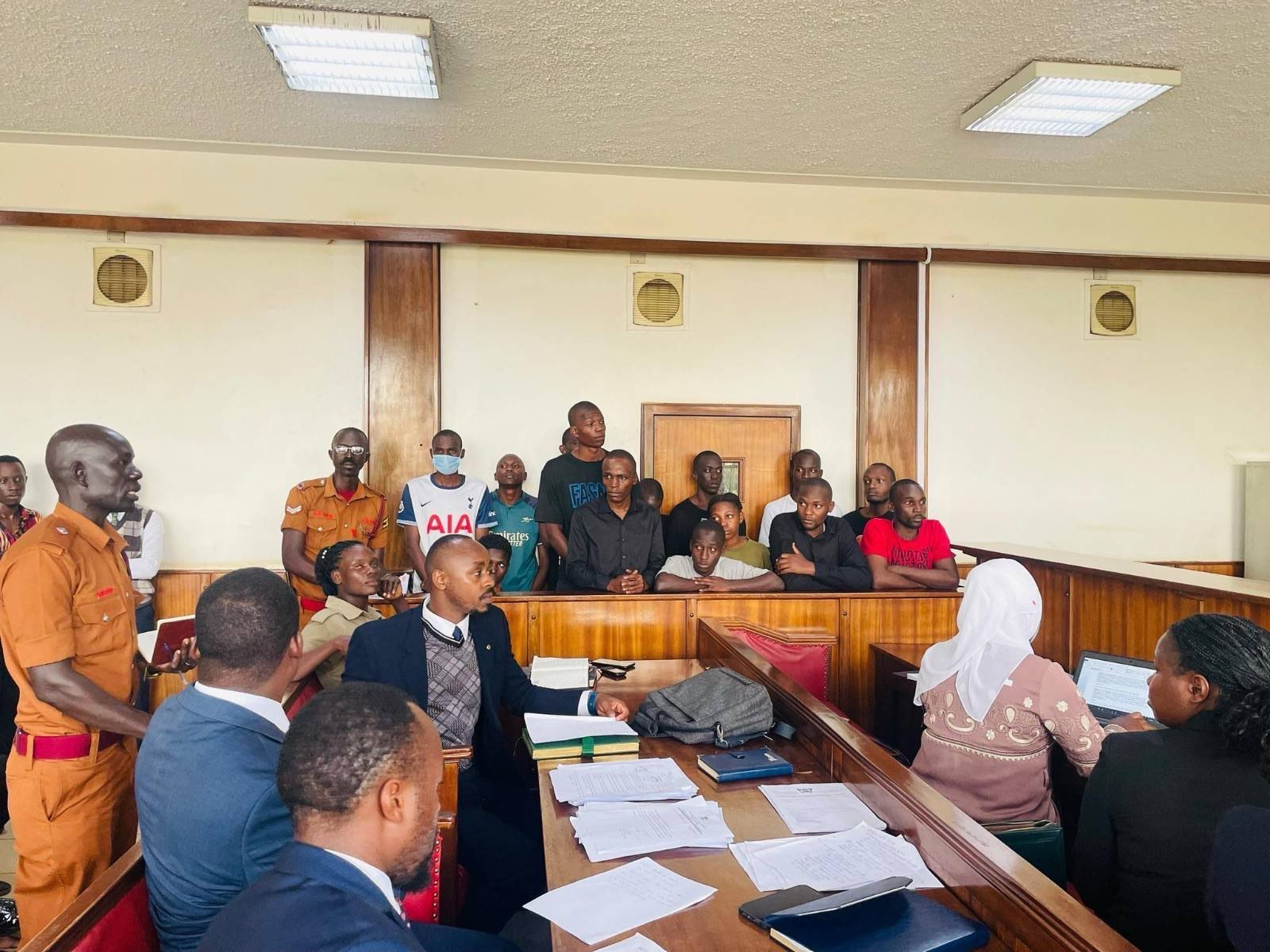
Special report by the dedicated and thorough Witness Radio team, offering a comprehensive and in-depth overview of the situation.
As Uganda moves forward with the controversial East African Crude Oil Pipeline (EACOP), a wave of arrests, intimidation, and court cases has targeted youth and environmental activists opposing the project. However, there is a noticeable and encouraging shift within Uganda’s justice systems, with a growing support for the protesters, potentially signaling a change in the legal landscape.
The EACOP project, stretching 1,443 kilometers from Uganda to Tanzania, has been hailed by the government as a development milestone. However, human rights groups and environmental watchdogs have consistently warned that the project poses serious risks to communities, biodiversity, and the climate. Concerns over land grabbing, inadequate compensation, and ecological degradation have mobilized a new generation of Ugandan activists.
Since 2022, as opposition to EACOP grew louder, Ugandan authorities have intensified a campaign of arrests and legal harassment. Police, military, and currently the Special Forces Command, a security unit tasked with protecting Uganda’s president, have been involved in brutal crackdowns on these activists.
Yuda Kaye, the mobilizer for students against EACOP, believes the criminalization is an attempt by the government to weaken their cause and silence them from speaking out about the project’s negative impacts.
“We are arrested just for raising the project concerns, which affect our future, the local communities, and the environment at large. Oftentimes, we are arrested without reason. They just round us up at once and brutally arrest us, Mr. Kaye reveals, in an interview with Witness Radio’s research team.
Activists have faced a litany of charges, including unlawful assembly, incitement to violence, public nuisance, and criminal trespass. Many of these charges have lacked substantive evidence and have been dismissed by the courts or had their files closed by the police after prolonged delays.
A case review conducted by Witness Radio Uganda reveals that Uganda’s justice system is being used to suppress the activities of youth activists opposing the project, rather than convicting them. However, despite the system being used to silence them, it has often found no merit in these cases.
Of a sample of 20 documented cases since 2022 involving the arrest of over 180 activists, 9 case files against the activists have either been dismissed by courts or closed by the police due to a lack of prosecution, another signal indicating the relevance of their work, while 11 cases remain ongoing.
The chart below shows trends in arrests, dismissed cases, and ongoing cases involving EACOP activists in Uganda from 2022 to May 2025.
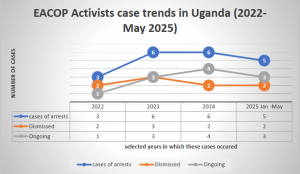
The review was conducted with support from the activists themselves and their lawyers. It involved a desk review and analysis of Witness Radio articles concerning the arrests of defenders and activists opposing the EACOP project.
Witness Radio’s analysis reveals a concerning trend as the majority of cases involving these activists are stalling at the police level rather than progressing to the courts of law. This suggests that the police have not only criminalized activism but are also playing a syndicate role in deliberately prolonging these cases under the excuse of ongoing investigations.
“While both the police and judiciary are being used to suppress dissent, the courts have at least demonstrated a degree of fairness, having dismissed at least 78% of cases that fall within their jurisdiction. In contrast, the police continue to hold 73% of activist cases in limbo, citing investigations as justification for indefinite delays.” The research team discovered.
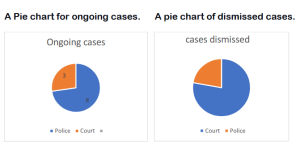
Witness Radio’s analysis further shows that in most of these cases, the state has failed to produce witnesses or evidence to convict the activists, adding that the charges are often just tools of intimidation. Additionally, this is accompanied by more extended periods during which decisions are being made.
Despite the intense crackdown, it is evident that these activists are winning, as no proven record of sentencing has been observed. Instead, these cases are often marred by delays in court or at the police, and in the end, some have been dismissed. This implies that protest marches and petition deliveries serve a purpose; the state just needs to listen to their concerns and formulate possible solutions to address them,” said Tonny Katende, Witness Radio Uganda’s Research, Media and Documentation Officer.
According to Article 29(1)(d) of the Constitution of Uganda, every individual has the right to “assemble and demonstrate together with others peacefully and unarmed and to petition.” Additionally, Article 20 emphasizes that fundamental rights and freedoms “are inherent and not granted by the State.” Yet activists report that police regularly deny them the right to exercise their rights as guaranteed.
At a February 2025 press conference, EACOP activists strongly condemned the police’s continued unlawful arrests of demonstrators exercising their constitutional rights and case delays. This followed escalating crackdowns that added to the tally of over 100 activists arrested in 2024 alone.
“We strongly condemn these arrests. Detaining demonstrators does not address the concerns affecting grassroots communities impacted by oil and gas projects,” declared the group, led by Bob Barigye, who remains in prison on another charge still linked to his opposition to EACOP.
An interview with Mr. Yuda Kaye, a mobilizer from the Students Against EACOP Movement, confirmed that the ongoing dismissals only reaffirm the legitimacy of their resistance.
“These cases are dismissed because the government and its justice systems don’t have any grounds to convict us. This justifies the fact that the issues we’re discussing are real. We only seek accountability, but since the government has power, they criminalize us and silence us,” Mr. Kaye added.
According to Kaye, the intimidation is real, but so is their commitment. “We are called enemies of progress, but we’re only protecting our future and that of our country. We’ve often proposed alternatives, but the government doesn’t want them.” He re-echoes.
Despite this, activists say their rights are routinely violated. Witness Radio Uganda attempted to contact the police spokesperson, Mr. Kituuma Rusooke, but known numbers were unreachable, and messages sent to him went unanswered.
In a separate interview with Mr. James Eremye Mawanda, the Judiciary Spokesperson, he acknowledged the pattern of dismissals and delays.
“As the Judiciary, we listen to cases, and where there is no evidence to support the case, a decision is made. When a crime is allegedly committed and an individual is brought before the court, the courts upholding the rule of law shall administer justice,” he said.
According to Witness Radio’s analysis, 2025 has seen the most dismissals so far, with six cases concluding, reinforcing the view that criminalization is used more for intimidation than as a means of legal redress. “Whereas the arrests took place in separate years, most of the dismissals have happened in 2025,” the research team further highlighted.
Mr. Brighton Aryampa, the team lead of Youth for Green Communities, one of the organizations that provide legal representation for Stop-EACOP activists, highlighted that the criminalization of Ugandan activists undermines Uganda’s democratic principles of free expression and open discourse.
“The government, in bed with oil corporations Total Energies and CNOOC, is deliberating using legal action against Stop EACOP activists to suppress dissent, free speech, right to peaceful protest, and against public participation. This is tainting Uganda as a country that undermines the democratic principles of free expression and open discourse, as hundreds of Stop EACOP activists have been arrested, charged, and some tried by a competent court. However, no one has been found guilty of the fabricated offense usually slapped on them.” He said in an interview with Witness Radio.
Counsel Aryampa further advised that the practice of powerful companies and businesses blackmailing and corrupting the Ugandan government to develop harmful projects while ignoring all social warnings and human rights abuses must be stopped.
The pressure exerted by these activists, both locally and internationally, has slowed the EACOP project. It has also led to bankers and insurers withdrawing from financing or insuring the project. According to Stop EACOP campaigners, more than 40 international banks and 30 global insurance firms, including Chubb, have distanced themselves from the controversial pipeline project, citing human rights and climate concerns raised by these activists.
Meanwhile, as the activism grows, the number of arrests is rising. Within just the first six months of 2025, over 40 activists have been criminalized for their activism. Among them is KCB 11, a group of eleven activists that was arrested at the KCB offices in April 2025. The group has spent over two months on remand, despite their lawyers’ pleas for bail to be granted.
Related posts:
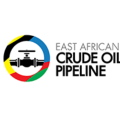
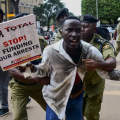 EACOP activism under Siege: Activists are reportedly criminalized for opposing oil pipeline project in Uganda.
EACOP activism under Siege: Activists are reportedly criminalized for opposing oil pipeline project in Uganda.
 EACOP: The trial of 20 environmental activists failed to take off, and now they want the case dismissed for lack of prosecution.
EACOP: The trial of 20 environmental activists failed to take off, and now they want the case dismissed for lack of prosecution.
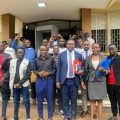 Milestone: Another case against the EACOP activists is dismissed due to the want of prosecution.
Milestone: Another case against the EACOP activists is dismissed due to the want of prosecution.
 The latest: Another group of anti-EACOP activists has been arrested for protesting Stanbic Bank’s financing of the EACOP Project.
The latest: Another group of anti-EACOP activists has been arrested for protesting Stanbic Bank’s financing of the EACOP Project.
SPECIAL REPORTS AND PROJECTS
‘Left to suffer’: Kenyan villagers take on Bamburi Cement over assaults, dog attacks
Published
4 months agoon
March 22, 2025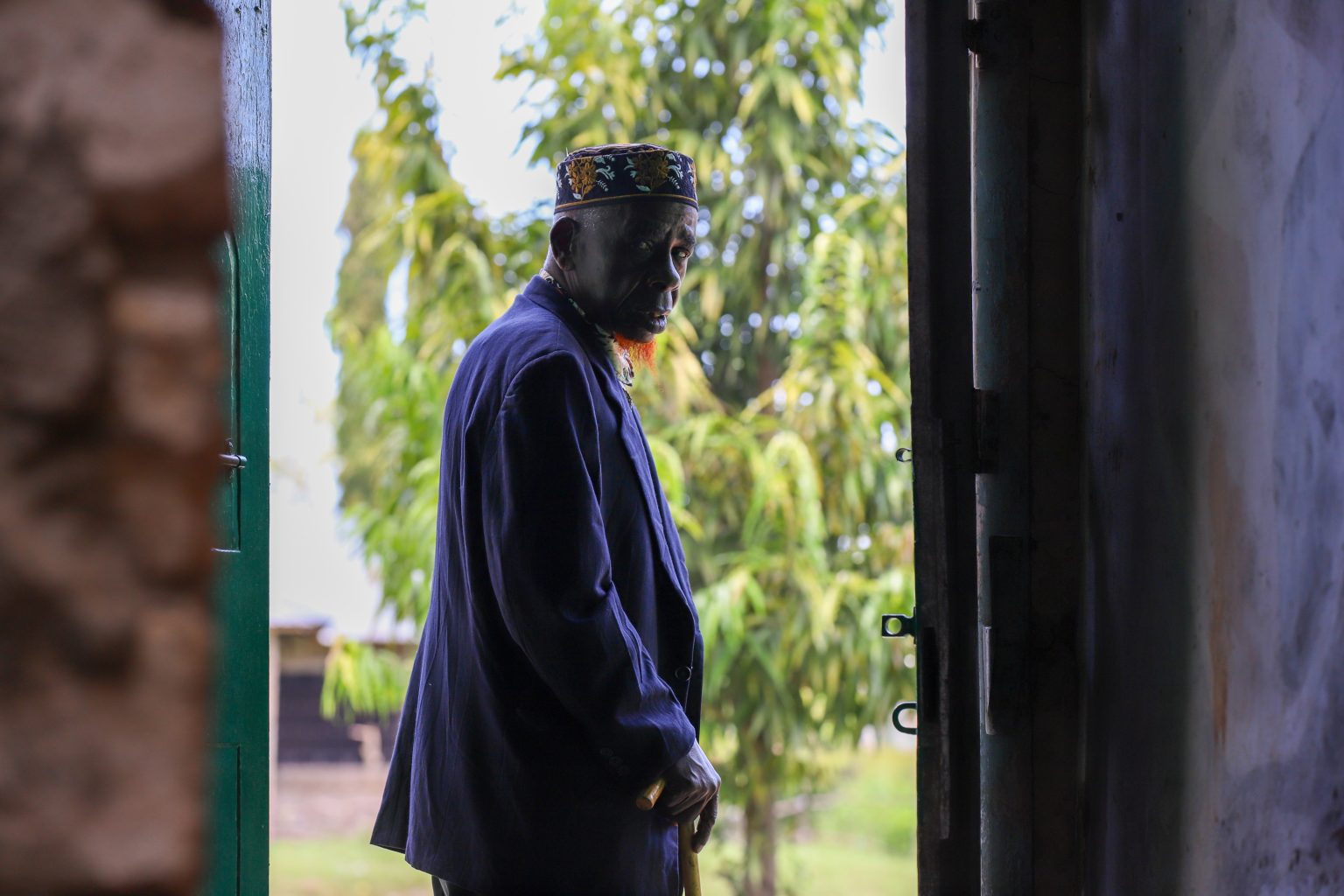
- The victims are aged between 24 and 60, and one of them has since passed on.
- Many were severely injured and hospitalized following brutal attacks, unlawful detention, and physical assault by Bamburi’s security personnel.
Editor’s note: Read the petition here.
Their hopes for justice seemed to be slipping away after initially taking on a multinational corporation and failing to hold it accountable for the brutal injuries they suffered.
The death of one of their own cast a shadow of despair, making it seem unlikely that they would ever bring the corporation to justice for the crimes they alleged.
However, 11 victims of dog attacks, assaults, and other severe human rights violations are now challenging Bamburi Cement PLC’s role in these abuses in court.
They are represented by the Kenya Human Rights Commission (KHRC), which on January 29, 2025, filed a legal claim before a constitutional court in Kenya, seeking to hold the multinational accountable for the harm suffered by the victims—residents of land parcels in Kwale that Bamburi claims ownership of. KHRC worked with the Kwale Mining Alliance (KMA) to bring this case.
The victims, aged between 24 and 60, include Mohamed Salim Mwakongoa, Ali Said, Abdalla Suleiman, Hamadi Jumadari, Abdalla Mohammed, and Omari Mbwana Bahakanda. Others are Shee Said Mbimbi, Omar Mohamed, Omar Ali Kalendi (deceased), Abdalla Jumadari, and Bakari Nuri Kassim.
Bamburi had hired a private security firm and deployed General Service Unit (GSU) officers to guard three adjoining land parcels, covering approximately 1,400 acres in Denyenye, Kwale. The GSU established a camp on the land, which has historically been accessed by residents who have long used established routes to reach the forest and the Indian Ocean.
For decades, these routes provided them with access to resources such as firewood, crops, and fish, which they relied on for their livelihoods. However, five years ago, when they attempted to collect firewood, harvest crops, and access the ocean through the land, Bamburi accused them of trespassing. The company’s private guards and GSU officers responded with force, setting dogs on them and assaulting them.
Many were severely injured and hospitalized following brutal attacks, unlawful detention, and physical assault by Bamburi’s security personnel. These incidents occurred despite the lack of clearly defined boundaries and the fact that the traditional access routes had never been contested.
According to the petition, GSU officers and private guards inflicted serious injuries by kicking, punching, and beating the victims with batons. Those who were arrested were neither taken to a police station nor charged with any offense. Despite their injuries, they were denied emergency medical care.
These actions were intended to intimidate residents, prevent them from accessing the beach, and suppress any historical claims to the land, the victims tell the court. Local police in Kwale failed to investigate the abuses, visit the crime scenes, or arrest any of the perpetrators, they add.
Now, the victims are seeking compensation for these violations. They have also asked the court to declare that their rights were violated through torture inflicted by Bamburi’s guards and GSU officers. Additionally, they want the court to rule that releasing guard dogs to attack them during arrests constituted an extreme and unlawful use of force.
Source: khrc.or.ke
Related posts:

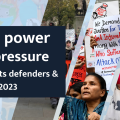 Breaking: Over 600 attacks against defenders have been recorded in the year 2023 globally- BHRRC report.
Breaking: Over 600 attacks against defenders have been recorded in the year 2023 globally- BHRRC report.
 Kaweeri Coffee land grabbing case re-trial resumes as evictees continue to suffer gross human rights violations.
Kaweeri Coffee land grabbing case re-trial resumes as evictees continue to suffer gross human rights violations.
 Criminalization of planet, land, and environmental defenders in Uganda is on the increase as 2023 recorded the soaring number of attacks.
Criminalization of planet, land, and environmental defenders in Uganda is on the increase as 2023 recorded the soaring number of attacks.
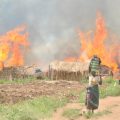 Local land grabbers evict villagers at night; foreign investors cultivate the same lands the next day
Local land grabbers evict villagers at night; foreign investors cultivate the same lands the next day
SPECIAL REPORTS AND PROJECTS
River ‘dies’ after massive acidic waste spill at Chinese-owned copper mine
Published
4 months agoon
March 22, 2025A catastrophic acid spill from a Chinese-owned copper mine in Zambia has contaminated a major river, sparking fears of long-term environmental damage and potential harm to millions of people.
The spill, which occurred on February 18, has sent shockwaves through the southern African nation.
Investigators from the Engineering Institution of Zambia revealed that the incident stemmed from the collapse of a tailings dam at the mine.
This dam, designed to contain acidic waste, released an estimated 50 million litres of toxic material into a stream feeding the Kafue River, Zambia’s most important waterway.
The waste is a dangerous cocktail of concentrated acid, dissolved solids, and heavy metals.
The Kafue River, stretching over 930 miles (1,500 kilometres) through the heart of Zambia, supports a vast ecosystem and provides water for millions. The contamination has already been detected at least 60 miles downstream from the spill site, raising serious concerns about the long-term impact on both human populations and wildlife.
Environmental activist Chilekwa Mumba, working in Zambia’s Copperbelt Province, described the incident as “an environmental disaster really of catastrophic consequences”.
The spill underscores the risks associated with mining, particularly in a region where China holds significant influence over the copper industry.
Zambia ranks among the world’s top 10 copper producers, a metal crucial for manufacturing smartphones and other technologies.
Zambian President Hakainde Hichilema has appealed for expert assistance to address the crisis. The full extent of the environmental damage is still being assessed.
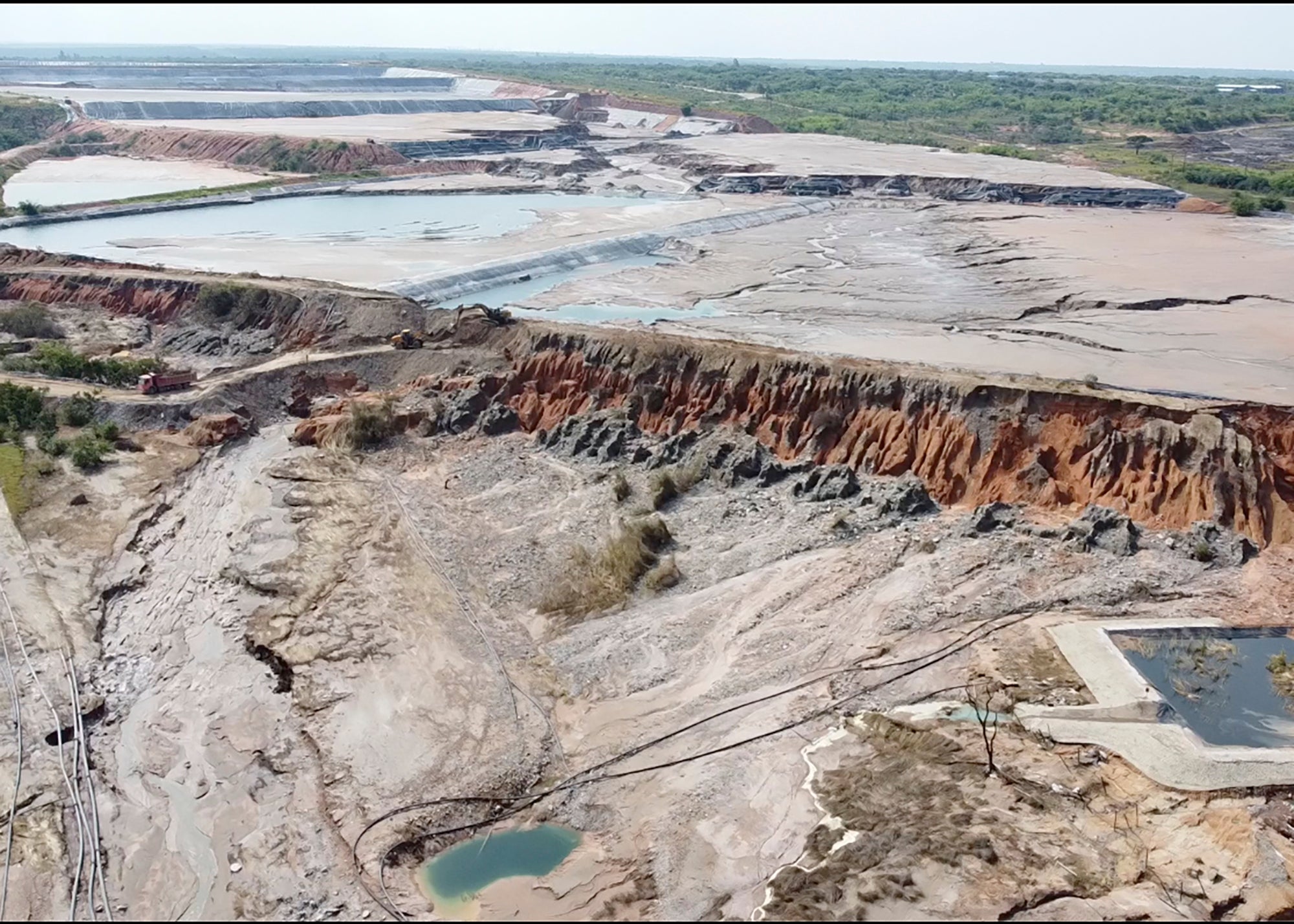
A river died overnight
An Associated Press reporter visited parts of the Kafue River, where dead fish could be seen washing up on the banks about 60 miles downstream from the mine run by Sino-Metals Leach Zambia, which is majority owned by the state-run China Nonferrous Metals Industry Group.
The Ministry of Water Development and Sanitation said the “devastating consequences” also included the destruction of crops along the river’s banks. Authorities are concerned that ground water will be contaminated as the mining waste seeps into the earth or is carried to other areas.
“Prior to February 18 this was a vibrant and alive river,” said Sean Cornelius, who lives near the Kafue and said fish died and birdlife near him disappeared almost immediately.
“Now everything is dead, it’s like a totally dead river. Unbelievable. Overnight, this river died.”
About 60 per cent of Zambia’s 20 million people live in the Kafue River basin and depend on it in some way as a source of fishing, irrigation for agriculture and water for industry. The river supplies drinking water to about five million people, including in the capital, Lusaka.
The acid leak at the mine caused a complete shutdown of the water supply to the nearby city of Kitwe, home to an estimated 700,000 people.
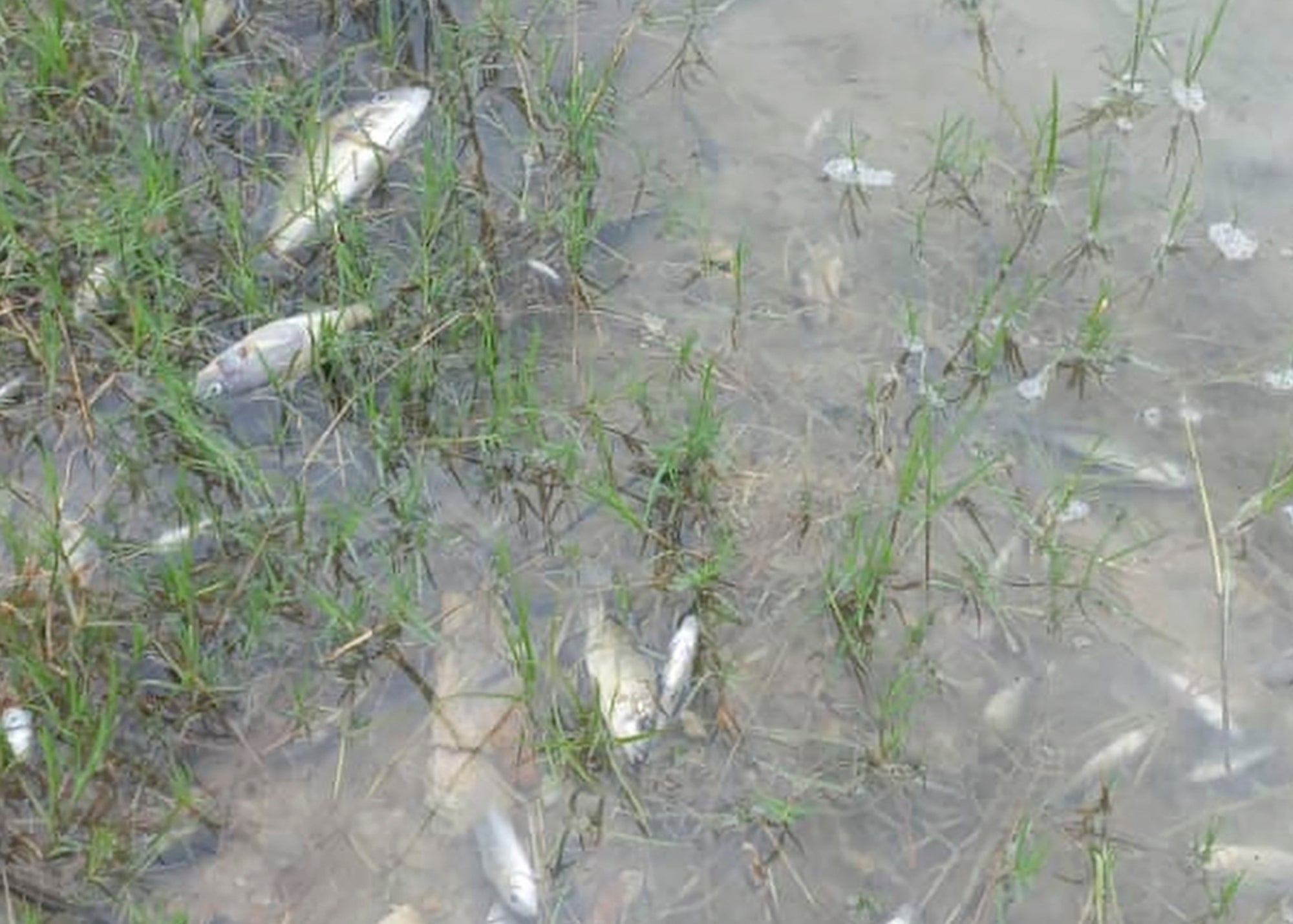
Attempts to roll back the damage
The Zambian government has deployed the air force to drop hundreds of tons of lime into the river in an attempt to counteract the acid and roll back the damage. Speed boats have also been used to ride up and down the river, applying lime.
Government spokesperson Cornelius Mweetwa said the situation was very serious and Sino-Metals Leach Zambia would bear the costs of the cleanup operation.
Zhang Peiwen, the chairman of Sino-Metals Leach Zambia, met with government ministers this week and apologized for the acid spill, according to a transcript of his speech at the meeting released by his company.
“This disaster has rung a big alarm for Sino-Metals Leach and the mining industry,” he said.
It “will go all out to restore the affected environment as quickly as possible”, he said.
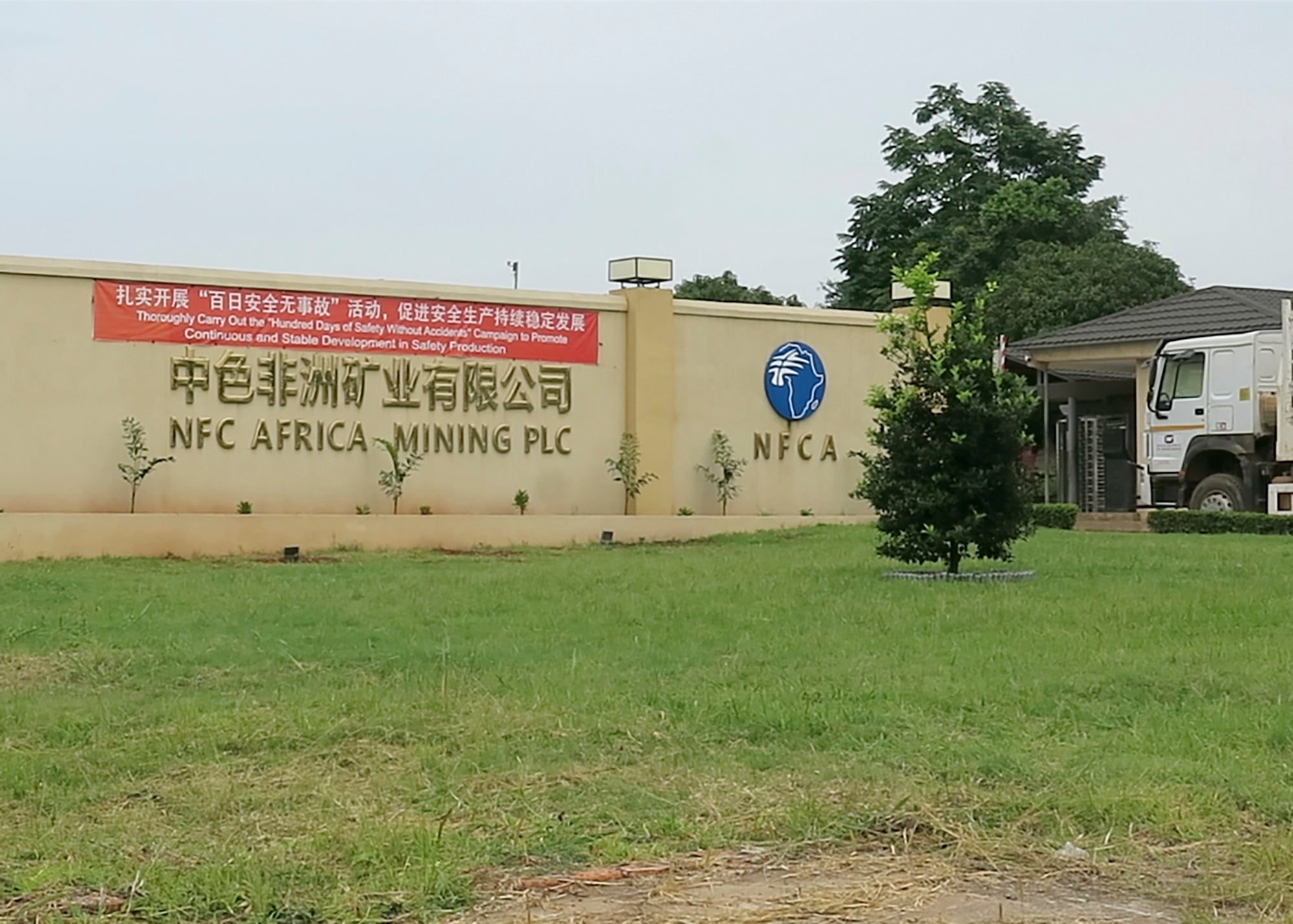
Discontent with Chinese presence
The environmental impact of China’s large mining interests in mineral-rich parts of Africa, which include Zambia’s neighbors Congo and Zimbabwe, has often been criticised, even as the minerals are crucial to the countries’ economies.
Chinese-owned copper mines have been accused of ignoring safety, labour and other regulations in Zambia as they strive to control its supply of the critical mineral, leading to some discontent with their presence.
Zambia is also burdened with more than $4 billion in debt to China and had to restructure some of its loans from China and other nations after defaulting on repayments in 2020.
A smaller acid waste leak from another Chinese-owned mine in Zambia’s copper belt was discovered days after the Sino-Metals accident, and authorities have accused the smaller mine of attempting to hide it.
Local police said a mine worker died at that second mine after falling into acid and alleged that the mine continued to operate after being instructed to stop its operations by authorities. Two Chinese mine managers have been arrested, police said.
Both mines have now halted their operations after orders from Zambian authorities, while many Zambians are angry.
“It really just brings out the negligence that some investors actually have when it comes to environmental protection,” said Mweene Himwinga, an environmental engineer who attended the meeting involving Mr Zhang, government ministers, and others.
“They don’t seem to have any concern at all, any regard at all. And I think it’s really worrying because at the end of the day, we as Zambian people, (it’s) the only land we have.”
Source: www.independent.co.uk

Activism on Trial: Despite the increasing repressive measures, Uganda’s EACOP protesters are achieving unexpected victories in the country’s justice systems.

Communities Under Siege: New Report Reveals World Bank Failures in Safeguard Compliance and Human Rights Oversight in Tanzania

A decade of displacement: How Uganda’s Oil refinery victims are dying before realizing justice as EACOP secures financial backing to further significant environmental harm.

Carbon Markets Are Not the Solution: The Failed Relaunch of Emission Trading and the Clean Development Mechanism

A decade of displacement: How Uganda’s Oil refinery victims are dying before realizing justice as EACOP secures financial backing to further significant environmental harm.

Govt launches Central Account for Busuulu to protect tenants from evictions

Activism on Trial: Despite the increasing repressive measures, Uganda’s EACOP protesters are achieving unexpected victories in the country’s justice systems.

Top 10 agribusiness giants: corporate concentration in food & farming in 2025

Innovative Finance from Canada projects positive impact on local communities.
Over 5000 Indigenous Communities evicted in Kiryandongo District
Petition To Land Inquiry Commission Over Human Rights In Kiryandongo District
Invisible victims of Uganda Land Grabs
Resource Center
- LAND GRABS AT GUNPOINT REPORT IN KIRYANDONGO DISTRICT
- RESEARCH BRIEF -TOURISM POTENTIAL OF GREATER MASAKA -MARCH 2025
- The Mouila Declaration of the Informal Alliance against the Expansion of Industrial Monocultures
- FORCED LAND EVICTIONS IN UGANDA TRENDS RIGHTS OF DEFENDERS IMPACT AND CALL FOR ACTION
- 12 KEY DEMANDS FROM CSOS TO WORLD LEADERS AT THE OPENING OF COP16 IN SAUDI ARABIA
- PRESENDIANTIAL DIRECTIVE BANNING ALL LAND EVICTIONS IN UGANDA
- FROM LAND GRABBERS TO CARBON COWBOYS A NEW SCRAMBLE FOR COMMUNITY LANDS TAKES OFF
- African Faith Leaders Demand Reparations From The Gates Foundation.
Legal Framework
READ BY CATEGORY
Newsletter
Trending
-
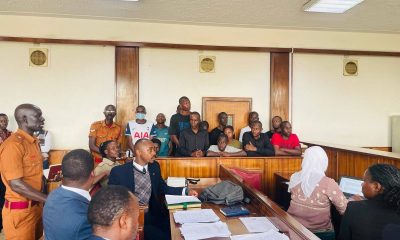
 SPECIAL REPORTS AND PROJECTS4 days ago
SPECIAL REPORTS AND PROJECTS4 days agoActivism on Trial: Despite the increasing repressive measures, Uganda’s EACOP protesters are achieving unexpected victories in the country’s justice systems.
-
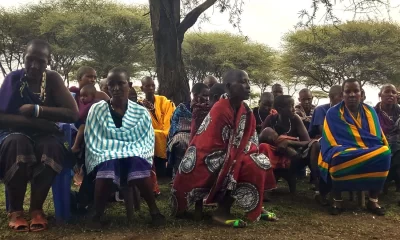
 NGO WORK1 week ago
NGO WORK1 week agoCommunities Under Siege: New Report Reveals World Bank Failures in Safeguard Compliance and Human Rights Oversight in Tanzania



